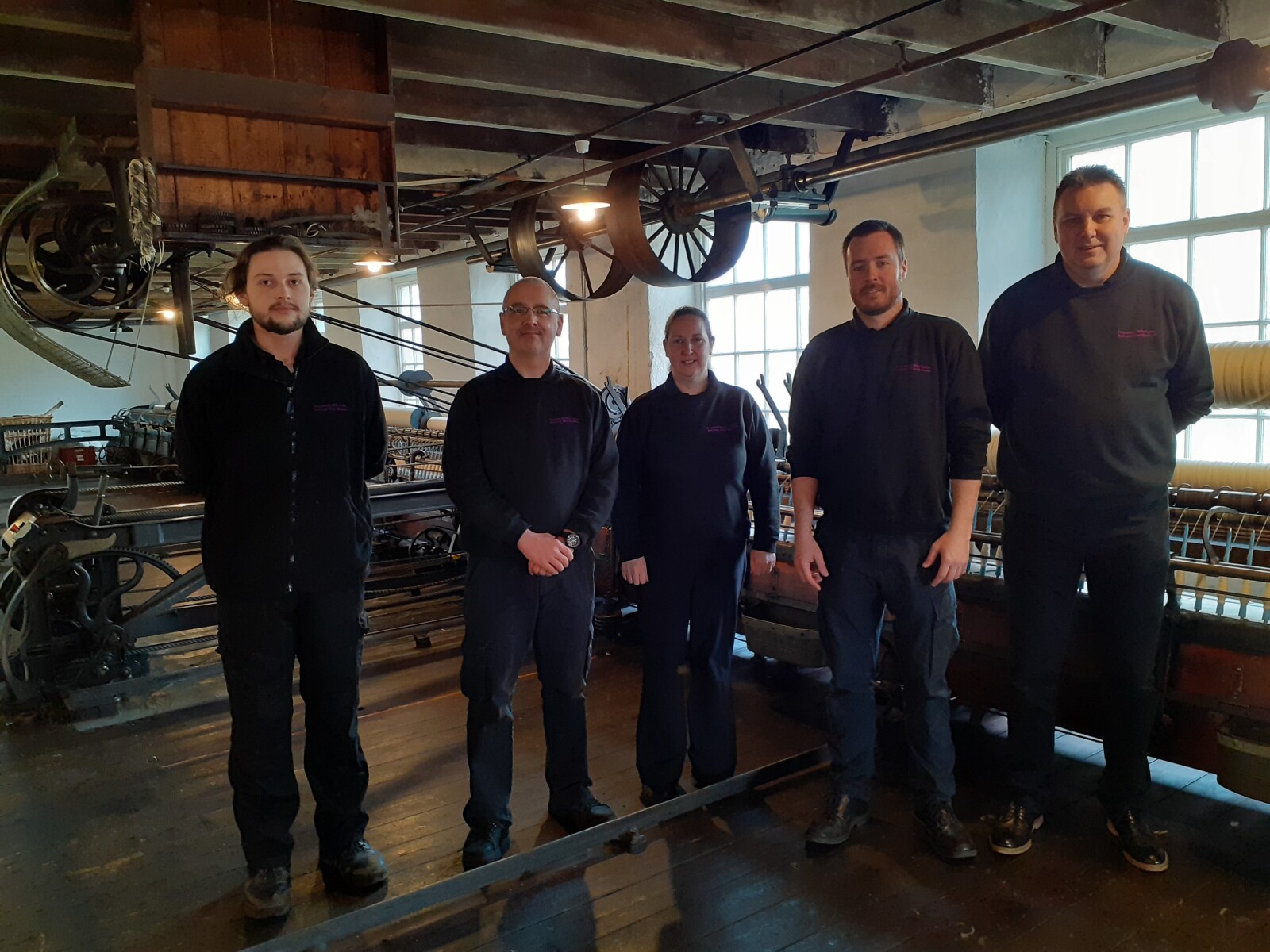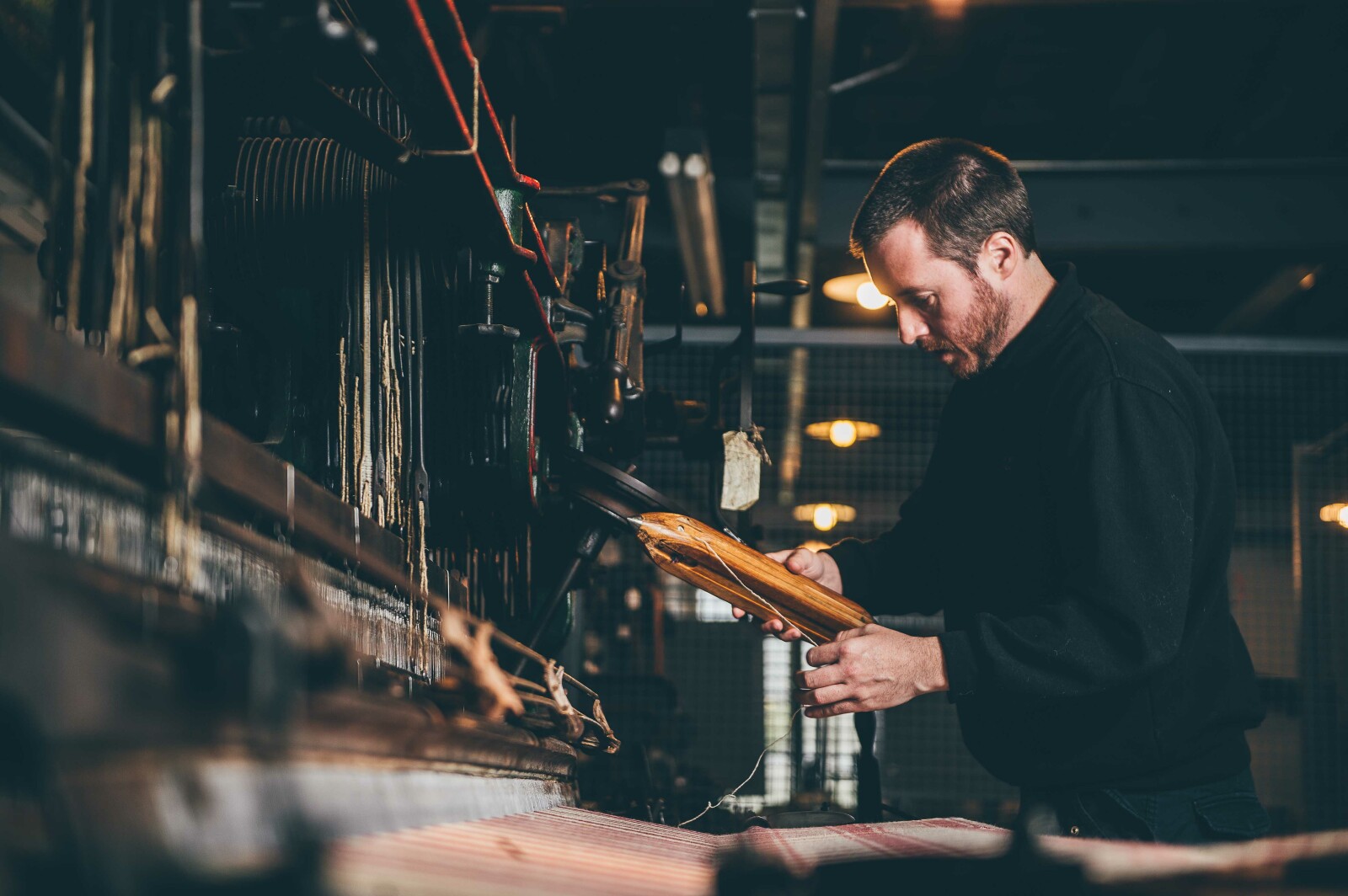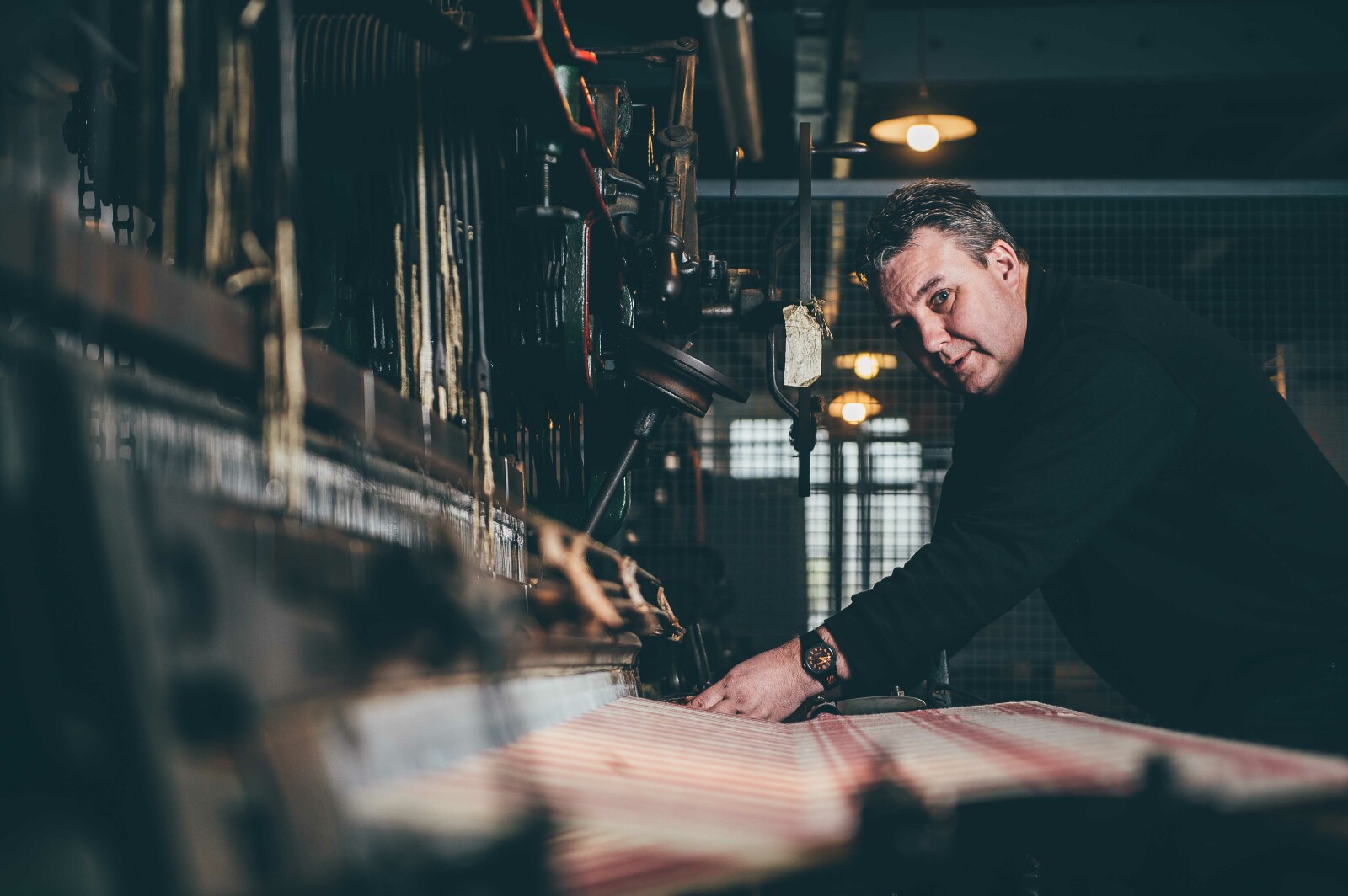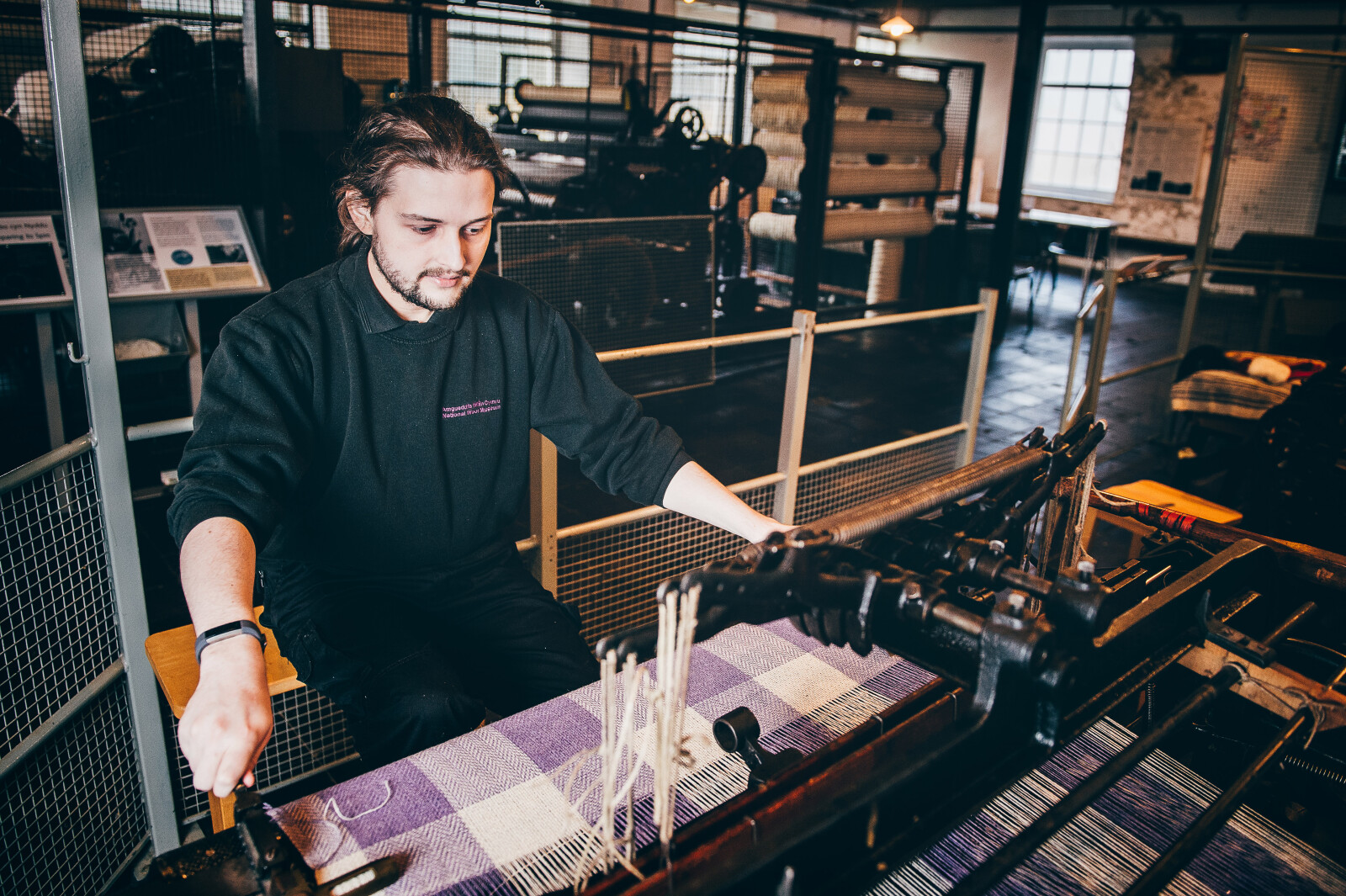Weaving the Future at the National Wool Museum
, 26 February 2020
Wool is being heralded as the all-natural, planet friendly, renewable and biodegradable future fibre. In an age in which we must question the impact that clothing and fast fashion are having on the planet, a growing number of consumers are returning to natural fibres – not just for clothing, but also to insulate and furnish their home. Preserving traditional skills is an important part of the work of Amgueddfa Cymru, but with this growing interest in natural and sustainable fibres, as well as the upsurge in homespun fashion and textiles, what have for years been considered ‘heritage crafts’ may well become important skills for the future.
Visitors to the National Wool Museum in Dre-fach Felindre already enjoy watching the master weavers of Melin Teifi, a commercial woollen mill who are tenants at the museum, weave beautiful fabrics in traditional patterns on mechanised looms. They provide visitors with a fascinating insight into the workings and processes of a working mill. But sadly, Melin Teifi is the last mill in Wales producing traditional Welsh flannel. At the height of the industry in the 20th century there were 217 mills in Wales, mainly producing Welsh blankets, flannel and tapestry cloth. There are currently 7 to 8 woollen mills operating in Wales, and there is a serious danger that these skills will not be preserved for the future, unless a concerted effort is made.
That is why Amgueddfa Cymru is especially delighted to welcome three new trainee Crafters to our team at the National Wool Museum. They are James Whittall, Jay Jones and Richard Collins. They joined in December and have already begun their training in heritage craft skills. They’ve recently begun demonstrating some of their newly acquired hand craft skills to our visitors. This helps us bring the story of the wool industry and the museum’s collection alive. As they develop weaving skills over the coming months and years, they may also help us fulfil some of the increasing demand for products with provenance and develop new commercial activity for the museum.
Our hope is that such activity could, in the future, support our rural economy and stimulate opportunities for our young people to realise the potential of gaining skilled work and fulfilling lives in this region, with the added benefit of supporting the maintenance and development of the Welsh language. The landscape of the woollen industry in Wales is likely to change over the coming years, and there is potential for the growth of ‘micro mills’, providing that traditional skills are retained to enable supply to Welsh designers. We are delighted to be playing our part in reclaiming these valuable skills to support the regeneration of what has historically been one of Wales’s most important industries.
Richard Collins, Trainee Crafter, learning to spin on one of the museums treadle wheels.
BBC Radio Wales Roy Noble Programme 01/03/2020: National Wool Museum's new Crafters
(Listen from 1:12:00)





Comments - (1)